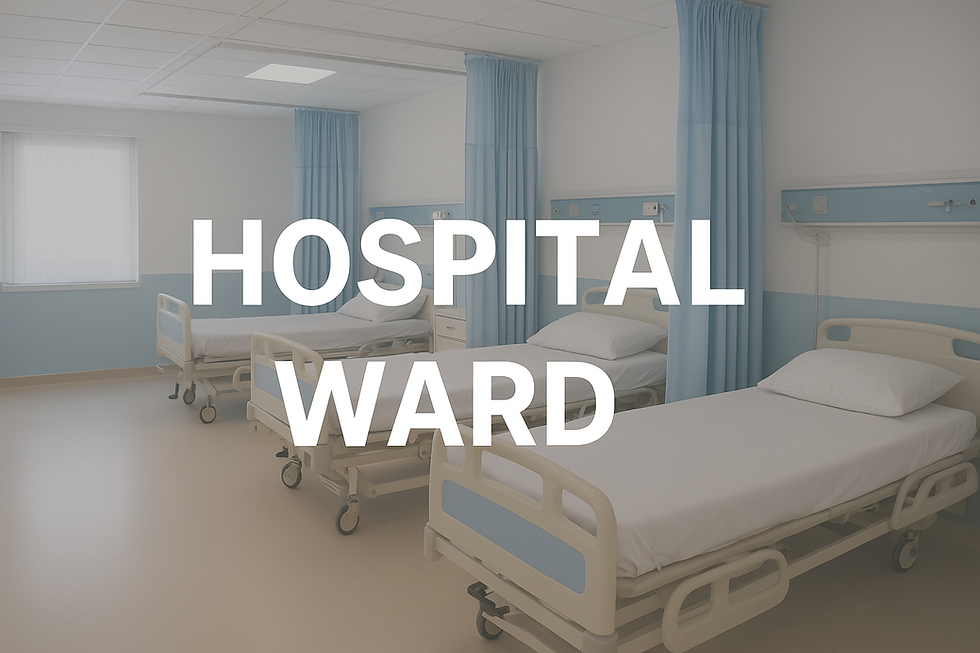Debunking 10 Common Misconceptions About Fowler Beds: Separating Fact from Fiction
- Dhruv Dixit
- Jun 21
- 4 min read
Hospital Fowler beds are specially designed hospital beds that offer adjustable sections to support various reclining and sitting positions, primarily for patient comfort and clinical care. Named after Dr. George Ryerson Fowler, these beds allow the head, back, and knees to be elevated independently, making them ideal for patients who need to rest in semi-upright positions for respiratory support, post-operative recovery, or mobility assistance.
As standard hospital fixtures, there are a number of misconceptions that cloud their true benefits. While designed to improve comfort, posture, and recovery, they’re often misunderstood in terms of their use, ease, and value.
Let’s explore and clarify the most pervasive myths surrounding Fowler beds, using a balanced, descriptive, and professional approach.

Common Misconceptions around Fowler Beds: Myths and Facts
Myth: Fowler Beds Are Only for Elderly Patients
It's often assumed that Fowler beds are solely for the aged. In reality, their usefulness extends far beyond geriatric care. Anyone with mobility issues, respiratory conditions, post-operative needs, or even chronic pain benefits from the adjustable positioning these beds offer. From semi-Fowler at 30–45° to high Fowler up to 90°, these angles improve breathing, digestion, and comfort for a wide range of patients. From someone recovering from surgery to managing a long-term condition, these beds provide essential support, not just for the elderly.
Myth: Fowler Beds Are Uncomfortable
Older versions of Fowler beds may have lacked user-focused design, but modern iterations are crafted for comfort. Thanks to both wired and wireless controls for backrest, knee elevation, and gentle tilting, patients can fine-tune their position without shifting wastefully. When paired with premium mattresses, the experience rivals that of resting on a specialised recliner, offering customisable comfort for relaxation or sleep .
Myth: Operating Fowler Beds Is Complicated
Control panels with intuitive icons are now standard. Patients and caregivers can use pre-set configurations like sitting, dining, or resting positions, without needing special training. The simplicity of electrical or hydraulic mechanisms replaces old-timey crank handles, making operation straightforward and smooth .
Myth: Fowler Beds Exist Only in Hospitals
While commonly found in hospital settings, Hospital Fowler beds are becoming increasingly popular in home healthcare environments. Their ability to promote respiratory function, prevent bedsores, and offer mobility assistance makes them ideal for anyone needing extended care at home, including individuals recovering post-surgery or managing chronic health issues.
Myth: Fowler Beds Are Unnecessarily Expensive
At first glance, commercial-grade Fowler beds may seem costlier than basic models. However, their long-term benefits, such as reduced staff assistance, decreased risk of pressure ulcers, and early mobility, translate into tangible value. They are durable investments, with improved patient outcomes often outweighing initial expenses.
Myth: Fowler Beds Increase the Risk of Falls
Some fear that adjustable backrests could destabilise patients. Yet, side-rail systems, slope-lock features, and motion sensors make modern Fowler beds among the safest designs available. When operated properly, they offer both support and safety, protecting against falls rather than contributing to them .

Myth: They’re Only About Adjustability, Not Medical Support
Contrary to this belief, Fowler beds serve critical medical purposes. The 30–45° semi-Fowler position helps reduce the risk of aspiration in feeding tubes, alleviates respiratory strain, and supports venous return. Knee elevation helps prevent clot formation, and independent adjustments support gastrointestinal comfort and chronic pain management, making them crucial in therapeutic regimens.
Myth: Manual Fowler Beds Are Better Since They Don’t Need Power
Manual adjustment tools, such as cranks, are indeed reliable, but they can be physically demanding and less precise. Electric or hydraulic mechanisms allow for smoother, targeted positioning, especially during emergencies or late at night when caregiver fatigue may be a factor. While power outages pose a risk, many models include battery backup or manual override options, combining convenience with reliability.
Myth: Semi-Fowler Isn’t as Health-Effective as Full Fowler
Semi-Fowler and high Fowler positions each serve distinct clinical needs. Semi-Fowler (30–45°) is optimal for preventing reflux and easing breathing, especially during feeding or respiratory distress, whereas high Fowler (45–90°) supports overall posture, compliance in dressing, and mental alertness . Both have vital roles in patient care depending on the clinical scenario.
Why Understanding Fowler Beds Matters
Fowler beds are much more than mechanical marvels, they’re clinical instruments designed with scientific precision and patient wellbeing in mind. From supporting breathing to aiding digestion, enhancing comfort, or preventing complications, their benefits span multiple patient demographics and care settings.
With misconceptions clarified, healthcare providers and caregivers can better leverage Fowler beds as transformative assets, combining comfort, safety, and clinical efficacy in one solution.
Why Aslams for Fowler Beds?
When expertise, innovation, and care intersect, the result is equipment that truly transforms patient care. Aslams brings this convergence profile to Fowler beds, everything is engineered for ease, hygiene, and reliability. Side rails are intuitive and sturdy; control panels are responsive; surfaces are easy to sanitise, staying infection-resistant even under frequent use. Every element, from adjustment smoothness to power fail-safe mechanisms, is designed through a lens of clinical insight.
Aslams does more than just supply furniture. We, as one of the best hospital furntiture manufacturers, provide solutions crafted with feedback from nurses, physiotherapists, and biomedical teams. Our Fowler beds don’t just follow the myths, they dismantle them in practice.
If you’re looking for reliable, patient-centric, and clinically intelligent solutions, Fowler beds from Aslams stand apart, turning debunked myths into trustworthy performance.




Comments